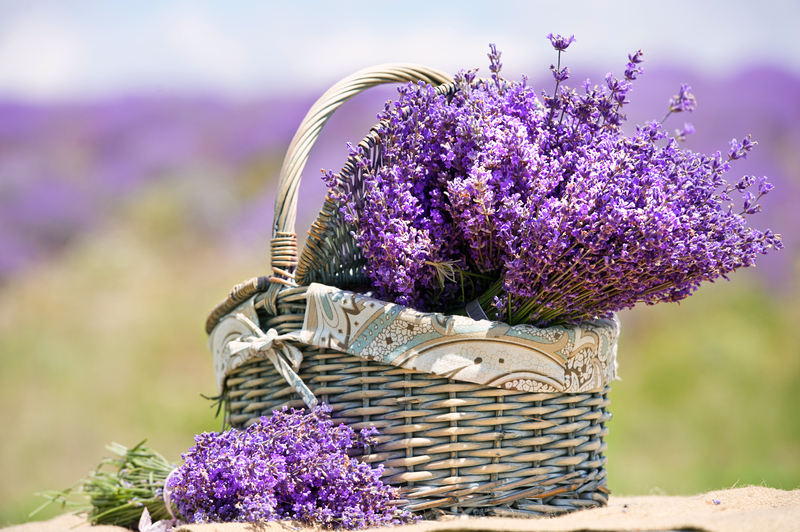Optimize Your Orchid Gardening Skills
Posted on 20/05/2025
Few plants evoke as much fascination and admiration as the ingenious, intricate orchid. Their stunning blooms and exotic allure have enchanted plant lovers across the world. However, orchids are often branded as challenging or finicky. In reality, with focused care and a little know-how, optimizing your orchid gardening skills is not only achievable but deeply rewarding.
In this comprehensive article, we delve into everything you need to optimize your skills in orchid gardening. From understanding orchid types and essential care guidelines to expert troubleshooting and blooming secrets, unlock thriving orchids in your own home or garden.
Understanding the World of Orchids
What Makes Orchids Unique?
There are over 28,000 species of orchids--making them one of the largest and most varied plant families on Earth. Unlike many plants, orchids have evolved to survive in diverse habitats, from steamy rainforests to arid deserts.
- Epiphytic orchids grow on trees and derive nutrients from air and debris--not by parasitism.
- Terrestrial orchids grow in soil, just like most garden plants.
- Lithophytic orchids thrive on rocks.
This versatility is wonderful--yet it also means orchids have distinct care requirements. By understanding the basics, you can improve your orchid gardening skills vastly.
Popular Orchid Varieties for Home Gardeners
- Phalaenopsis (Moth Orchid): Ideal for beginners; tolerate indoor conditions well and bloom for months.
- Cattleya: Known for large, vibrant flowers and pleasant fragrance.
- Dendrobium: Many species, from easy to advanced, with spectacular floral displays.
- Oncidium (Dancing Lady): Characterized by sprays of tiny, dazzling blooms.
When aiming to optimize your orchid care skills, start with robust varieties like the Phalaenopsis before progressing to others.

Optimal Orchid Growing Conditions
Master Light Requirements
Light is perhaps the most critical factor for orchid gardening success. Orchids, unlike other houseplants, often need bright, indirect light.
- Phalaenopsis and Paphiopedilum: Moderate to low light (East or north-facing window).
- Cattleya and Dendrobium: Bright, filtered light (South or west window, behind sheer curtain).
Check your orchid's leaf color as a guide--a healthy leaf is light to medium green. Dark green = too little light; yellow = too much!
Get the Temperature & Humidity Right
- Daytime: Most orchids thrive at 65-80?F (18-27?C).
- Nighttime: A drop of 10-15 degrees encourages blooms.
- Humidity: Orchids love 50-70% relative humidity. Increase humidity with trays of water, room humidifiers, or clustering plants together.
The Right Orchid Potting Mix
Unlike typical houseplants, orchids prefer specialized potting mediums:
- Pine bark chips
- Sphagnum moss
- Coconut husk
- Perlite
- Charcoal
This mixture ensures roots have ample air circulation and drainage. Avoid using standard potting soil, as it retains too much water.
Orchid Watering Techniques: Nurture Without Overwatering
How Often Should You Water Orchids?
One of the most common mistakes for orchid gardeners is overwatering. Many orchids prefer to dry out slightly between waterings.
- Typically, water once a week in winter; twice a week in summer.
- Check the medium: if dry an inch down, it's time to water.
- Avoid letting water sit in the crown or between leaves as this invites rot.
Best Watering Practices for Optimized Orchid Growth
- Use room temperature water--avoid fluoridated or softened water if possible.
- Water early in the day to allow leaves to dry before night.
- Use a gentle stream or dip the pot in water to allow full saturation.
Remember: Roots should be silvery-white when dry, green when moist.
The Secret to Fertilizing Orchids Effectively
Understanding Orchid Fertilization
Orchids don't require heavy feeding. In fact, less is more!
- Use a balanced orchid fertilizer (20-20-20 or similar) diluted to half- or quarter-strength.
- Fertilize every two weeks during active growth; reduce to monthly in winter.
- Alternate with plain water to prevent mineral buildup and root burn.
Tip: Flush orchid pots with clear water every month to wash away excess salts.
Repotting Orchids Like an Expert
When to Repot Orchids
- Every 18-24 months, or when potting mix breaks down.
- When roots outgrow the pot or become mushy/rotten.
- If water no longer drains easily.
How to Repot for Healthy Growth
- Remove the orchid gently and trim away dead or rotten roots with sterilized scissors.
- Choose a slightly larger pot with drainage holes.
- Fill with fresh orchid mix, nestling roots inside with gentle pressure.
- Water thoroughly after repotting, but allow a period of dryness between future waterings to encourage root recovery.
Boosting Blooming Frequency: Pro Orchid Gardening Tips
Encourage Regular Blooms
- Make sure you're mimicking natural light and temperature cycles.
- Some orchids need a dry "rest period" in winter to flower well.
- Fertilize more (but not too much) during the growing season.
- Avoid sudden drafts; keep humidity steady.
- Properly prune spent flower stems (i.e., for Phalaenopsis, cut above a node to encourage a new spike).
Note: If your orchid refuses to bloom, consider supplemental grow lights or a cooler night temperature for several weeks.
Troubleshooting Common Orchid Issues
Yellowing Leaves
- Too much direct sun; Move to filtered light.
- Overwatering; let medium dry before next watering.
Root Rot
- Caused by constant wetness or poor drainage.
- Use only specialized orchid mixes.
- Remove dead roots and repot in fresh medium if detected.
Pests (Mealybugs, Spider Mites)
- Wipe leaves with diluted alcohol or insecticidal soap.
- Increase humidity and airflow.
Advanced Care to Master Orchid Gardening
Orchid Propagation Tips
Want to expand your collection? Some varieties grow keikis (baby plants) on the flower stem or pseudobulbs. Wait until roots develop, then carefully pot up the keiki in a small container.
Orchid Mounting and Display
- Epiphytic orchids thrive when mounted on cork bark or wooden plaques.
- Secure with soft ties, sphagnum moss for moisture.
- Regular misting is essential for mounted orchids.
Sterilize Tools for Optimal Orchid Health
Always sterilize scissors and tools between uses. This prevents spread of viruses or bacteria and keeps your orchid gardening optimized for peak health.
Orchid Gardening in Different Environments
Indoor Orchid Gardening Optimization
- Use sheer curtains to filter harsh sunlight.
- Set pots on humidity trays or grouped together.
- Supplement with LED grow lights during winter months.
Outdoor Orchid Gardening Tips
- Protect from direct sun and heavy rain.
- Provide dappled shade--under trees or shade cloth is perfect.
- Watch for slugs/snails and increased pest risk outdoors.

Frequently Asked Questions about Optimizing Orchid Gardening Skills
Do orchids need special pots?
Yes. Use pots with multiple drainage holes. Clear orchid pots allow monitoring of root health and moisture.
How long do orchid blooms last?
With proper care, many orchid blooms (like Phalaenopsis) can last 2-4 months or longer, making them a stunning long-term display.
Can you grow orchids from seeds?
Growing orchids from seed is challenging and often requires laboratory conditions. Most home gardeners use keikis or divisions to propagate orchids.
Conclusion: Thrive with Optimized Orchid Gardening
Your journey to optimize your orchid gardening skills doesn't end here. Orchids are resilient, adaptable--and endlessly rewarding. With diligent observation, the right environment, and ongoing learning, you will not just grow but thrive as an orchid gardener. Whether you covet cascading phalaenopsis or the wild allure of a cattleya, following these tips will transform your orchid experience from mysterious to masterful.
Remember: Each orchid is unique. Tune in to its signals, adjust your care, and celebrate each new unfurling bloom as proof of your optimized orchid gardening finesse. Happy growing!
- Keep learning and experimenting with new techniques to continually enhance your orchid gardening skills.
- Join local or online orchid societies for support, advice, and inspiration from fellow enthusiasts.
Ready to maximize blooms and boost your confidence? Start optimizing your orchid care today for rewarding, breath-taking results!

